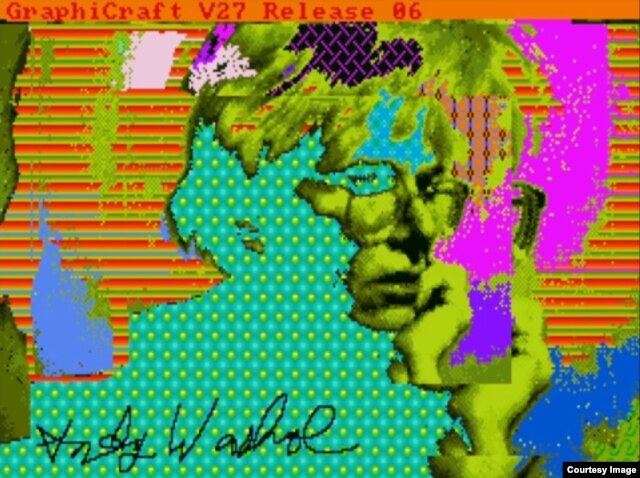May 19,2014
PITTSBURGH, PENNSYLVANIA — Long-lost modified digital images by pop culture artist Andy Warhol have been rediscovered, thanks to a collaboration among Carnegie Mellon University, the Carnegie Museum of Art, and The Warhol Museum in Pittsburgh, Pennsylvania.
The images are being retrieved from a 1985 Commodore Amiga computer.
Back in time
Stepping into Pittsburgh software engineer Keith Bare’s basement is like stepping into a computing time machine. His bulky screen and noisy disk drives have spent the last several decades on most other people’s shelves collecting dust.
“They had a level of simplicity often times that we don’t see in modern computers anymore,” Bare said.
His fellow members of the Carnegie Mellon University Computer Club call Bare the “Amiga Guru.”
Back to 1985, the Commodore Amiga was the newest and greatest computer.
To create buzz at the Amiga launch party, Commodore enlisted Warhol ? best known for his paintings of a Campbell’s Soup Can and actress Marilyn Monroe ? to demonstrate its capabilities, which incorporated a drawing tablet and another revolutionary device: a digital camera.
“He took some digital pictures and modified them before most people had been thinking about digital photography at all,” Bare said.
 Modified digital art by Andy Warhol recovered from a 1985 computer. (Courtesy: Carnegie Museum of Art/Hillman Photography Initiative)
Modified digital art by Andy Warhol recovered from a 1985 computer. (Courtesy: Carnegie Museum of Art/Hillman Photography Initiative)Lost images
After his death in 1987, the computer and floppy discs were stored in the archives at The Warhol Museum, and the story about Warhol’s experimentation with the Amiga almost ended there.
“Those drawings would have been lost,” said Divya Heffley, of the Carnegie Museum of Art’s Hillman Photography Initiative, who is producing the documentary series The Invisible Photograph.
Stumbling across the YouTube video of the 1985 Amiga launch sparked an idea that brought the Carnegie Museum of Art together with the Warhol Museum and Bare’s CMU computer club in an attempt to recover the contents of Warhol’s Amiga computer. As cameras rolled, they logged in to the unknown.
“Nobody knew what we were going to find on those disks,” Bare said, adding that it took time for the team to understand the software used to create the images. “Not only is it relying on the digital media surviving, another thing that we don’t really think about is you also need to be able to have software that's able to understand that digital data.”
After some reverse software engineering, they hit pay dirt: the Warhol digital art few had seen before.
The iconic images of a digital Campbell’s soup can and Warhol’s self-portrait are just a few of some 20 images recovered from floppy disks.
Cautionary tale
Heffley says the search for Warhol’s art is both a history lesson and a cautionary tale.
“If we’re not careful technology will become obsolete," she said, "and we will no longer have the ability to see the photographs, to see the images we hold so dear and so precious.”
The Warhol images, now restored and archived, can be viewed by watching the Carnegie Museum of Art’s latest installment of The Invisible Photograph online documentary series, entitled “Trapped.”